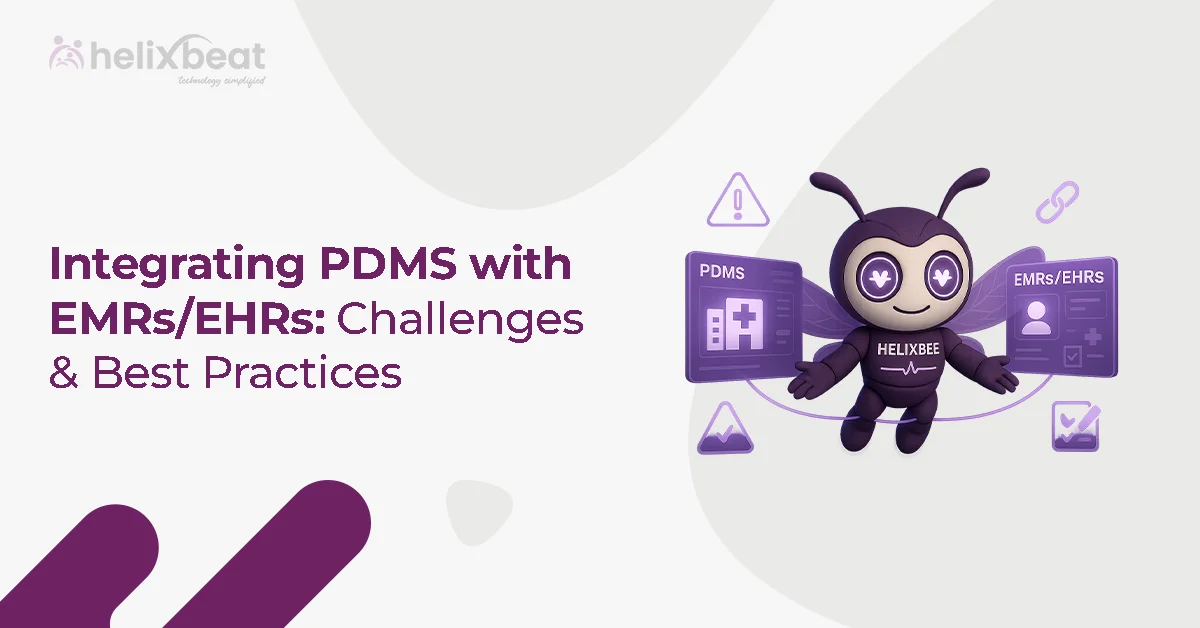As a healthcare provider, one of the most heartbreaking experiences is watching patients walk away, not because they don’t trust our care or services, but because they simply can’t afford it. I’ve seen too many patients delay essential treatments or skip follow-ups just to avoid hefty medical bills. And that hits differently when your mission is to heal, not to drive people away.
Today’s patients are not just seeking quality care—they also want convenient, flexible financial options. With the rising pressure of out-of-pocket expenses, we need to do more than provide treatment. We must make it financially accessible. That’s where digital payment platforms like Paynova step in. Paynova not only simplifies transactions but also empowers patients by offering customizable payment plans directly through your existing payment gateway.
Let’s dive into how offering payment plans via digital payment platforms can transform your practice’s patient retention and revenue cycle.

Table of Contents
Understanding High Medical Costs and Why Patients Are Walking Away
To provide better care and retain patients, healthcare providers must first understand the financial barriers that keep people from seeking medical attention. Factors such as income levels, affordability, and financial readiness directly impact a patient’s ability to access care.
Although the number of uninsured Americans has dropped in recent years, over 25 million people in the U.S. still lack health insurance. The primary reason? Cost. Many individuals simply cannot afford health insurance, or they don’t qualify for subsidized coverage.
Even those with employer-provided insurance plans are feeling the strain. A 2023 survey by the Kaiser Family Foundation reported that the average annual premium for single coverage hit $8,435, while family coverage soared to $23,968, a 7% increase from the previous year. These rising costs create a perfect storm of delayed care, missed appointments, and untreated conditions.
From a provider’s standpoint, it’s easy to see unpaid bills as a frustrating challenge. But when we shift our perspective and consider the patient’s financial stress, we find an opportunity to improve their overall experience. Offering an excellent clinical experience should go hand-in-hand with offering a smooth and empathetic payment experience.
Without flexible payment options, we risk losing patients, not because they don’t value the care, but because they simply can’t afford it upfront. So why are patients choosing to leave?
- High Out-of-Pocket Expenses: Deductibles and co-pays can make even insured patients hesitant.
- Unpredictable Billing: Many patients fear the “surprise” bill post-treatment.
- Lack of Transparent Payment Options: When no clear repayment plan is offered, patients feel overwhelmed.
- Upfront Payment Expectations: Asking for payment in full before treatment often deters care seekers.
- Limited Access to Digital Payment Platforms: Patients find the payment process too complex when it isn’t integrated with digital systems.
A healthcare facility that can offer flexible financial options is more likely to retain patients and ensure they return for follow-ups.
What is a Payment Plan? Why Does it Matter?
A payment plan allows patients to pay for their treatments over time, instead of in one lump sum. Think of it as the difference between a daunting obstacle and an achievable goal. When patients see manageable steps, they’re more likely to say yes to care.
Five Key Benefits of Offering Payment Plans:
- Boosts Treatment Acceptance: Patients are more likely to proceed with needed procedures.
- Reduces Financial Anxiety: Monthly payments are less intimidating.
- Improves Practice Cash Flow: Consistent, predictable payments mean fewer account receivables.
- Lowers No-Show Rates: Patients who commit financially tend to follow through with appointments.
- Fosters Long-Term Relationships: Payment plans demonstrate empathy, earning patient trust.
The integration of payment plans through digital payment platforms creates a win-win situation for both providers and patients.
How Paynova’s Digital Payment Platforms Supports Payment Plans
Paynova is more than a payment solution. It’s a full-fledged, healthcare-focused digital payment platforms that redefines the way medical bills are handled. Here’s how Paynova makes a difference:
1. Customizable Payment Plans
Paynova allows providers to design personalized payment plans tailored to each patient’s treatment, budget, or preferences. You can control:
- Frequency of payments (weekly, bi-weekly, monthly)
- Repayment duration (e.g., 3, 6, or 12 months)
- Auto-reminders to keep patients on schedule
Flexible payment options like these improve acceptance rates by removing financial friction.
2. HIPAA-Compliant Payment Solutions
Compliance is non-negotiable in healthcare. Paynova adheres strictly to HIPAA regulations, ensuring all payment data, including patient financial and health details, is encrypted, stored securely, and processed under high-standard protocols.
3. Mobile Payment Integration
Today’s patients expect convenience. Paynova’s mobile-first experience lets them:
- Pay bills with just a few taps
- View or modify their payment plans anytime
- Receive payment reminders or alerts in real time
This accessibility leads to faster payments and fewer delinquencies.
4. Real-Time Payment Analytics
Knowledge is power. With real-time payment analytics, providers can:
- Spot missed or upcoming payments
- Monitor patient segments by payment trends
- Forecast incoming revenue accurately
These insights enable proactive financial planning and better risk management.
5. Secure Payment Gateways
Paynova uses PCI-compliant, encrypted gateways that protect against fraud and unauthorized access. Whether through credit cards, ACH, or digital wallets, every transaction is safeguarded end-to-end.
Real Examples of Paynova in Action
Let’s take the case of an urban dental clinic in Chicago. Before using digital payment platforms like Paynova, their monthly revenue collection rate hovered around 67%. Many patients skipped follow-ups due to upfront costs. Within three months of launching Paynova’s payment plan system:
- Revenue collection rose to 89%
- Patient retention improved by 22%
- No-shows tied to financial concerns dropped 36%
In another case, a dermatology clinic in Texas introduced 6-month installment options for elective laser procedures. Patients appreciated the transparency and affordability, resulting in a noticeable increase in bookings and follow-through.
These are more than statistics. They’re stories of real people accessing care—because affordability was no longer the obstacle.
Implementing Effective Payment Plan Strategies
The first step toward offering flexible payment plans is understanding where your patients are struggling financially. Identify which procedures or services consistently lead to high patient balances, and analyze the associated costs. Simultaneously, assess your patient demographics—age, employment type, insurance status, and financial behavior—to tailor a payment plan strategy that meets their unique needs.
There’s no one-size-fits-all approach to billing and collections. Different patient segments respond differently based on their financial situations, cultural expectations, and communication preferences. The more you understand your patient base, the more targeted and effective your payment strategy will be. By introducing payment plans to the right patients at the right time, you can significantly improve treatment acceptance and reduce financial stress.
Clear and empathetic communication is also key. When patients understand their payment options upfront, they’re far more likely to commit to care. Many larger practices successfully use financial counselors to walk patients through the available payment plans, breaking down options in a calm, patient-friendly way that builds trust and comfort.
But providing payment flexibility isn’t just about the plans themselves—it’s also about how patients prefer to pay. Today’s patients are digital-first. They expect payment experiences that are fast, familiar, and mobile-friendly. That means accepting:
- Debit/credit cards
- Digital wallets like Apple Pay or Google Pay
- Online payments through patient portals
- Auto-pay subscriptions for recurring payments
Embracing these modern methods not only meets patient expectations but also boosts your collection rate and strengthens your overall revenue cycle. By aligning flexible payment plans with up-to-date digital tools, you position your practice for both financial success and patient satisfaction.
Why Paynova Stands Out Among Digital Payment Platforms
With so many digital payment platforms out there, why choose Paynova?
- Designed for Healthcare: Unlike generic tools, digital payment platforms like Paynova understands the compliance, empathy, and flexibility needed in the medical world.
- HIPAA-Compliant Payment Solutions: Security and trust go hand-in-hand.
- Mobile Payment
- Options: Meet your patients where they are—on their phones.
- Powerful Real-Time Payment Analytics: See what’s working, fix what’s not.
- Secure Payment Gateways: Peace of mind for you and your patients.
The blend of functionality and human-centric design is what sets Paynova apart.
Final Thoughts
Healthcare isn’t just about healing; it’s also about making care accessible. If you’re still relying on outdated billing systems or expecting full payment upfront, you’re pushing patients away without realizing it.
With Paynova, you get a digital payment platforms that does more than collect money. It builds trust, keeps your practice compliant, and most importantly—it keeps patients coming back.
Action Step: Evaluate how many patients delayed or skipped care last quarter due to cost. Imagine the difference a simple payment plan could’ve made. Now imagine what digital payment platforms like Paynova can do when implemented across your system.
The future of healthcare is digital, flexible, and patient-focused. Let Paynova help you lead the way.
FAQs
What are digital payment platforms in healthcare?
Digital payment platforms in healthcare, like Paynova, allow patients to pay for their treatments over time through customizable payment plans, improving affordability and patient retention.
How can digital payment platforms help reduce patient drop-offs?
Digital payment platforms make medical bills more manageable by offering flexible payment plans. This helps patients commit to treatment without financial anxiety, leading to better retention.
Are payment plans available for all types of medical treatments?
Yes, digital payment platforms like Paynova offer customizable payment plans tailored to patient budgets for a wide range of medical treatments, from routine procedures to elective services.
What are the key benefits of offering payment plans to patients?
Offering payment plans boosts treatment acceptance, reduces financial stress, improves cash flow, lowers no-show rates, and fosters long-term patient relationships.
Is Paynova HIPAA-compliant?
Yes, Paynova strictly adheres to HIPAA regulations, ensuring that all patient financial and health data is securely encrypted and processed in compliance with healthcare privacy standards.
Can patients pay with Paynova through mobile devices?
Yes, Paynova offers a mobile-first payment solution. It allows patients to pay their bills, view and modify payment plans, and receive real-time reminders on their smartphones.
How do I implement payment plans with Paynova in my practice?
To implement payment plans, analyze your patient base to understand their financial needs, then customize repayment options through Paynova’s platform to offer clear, flexible, and patient-friendly payment choices.














